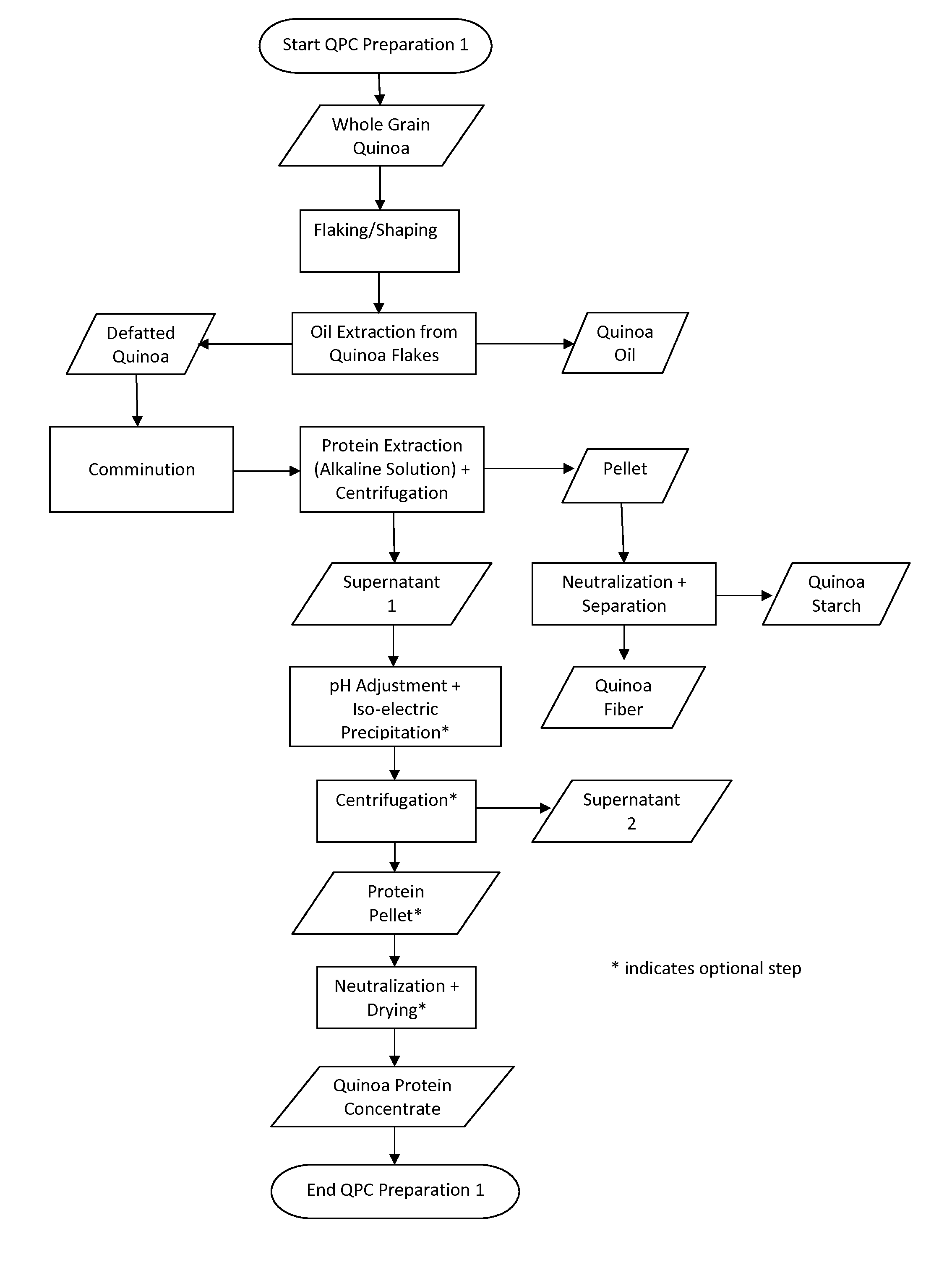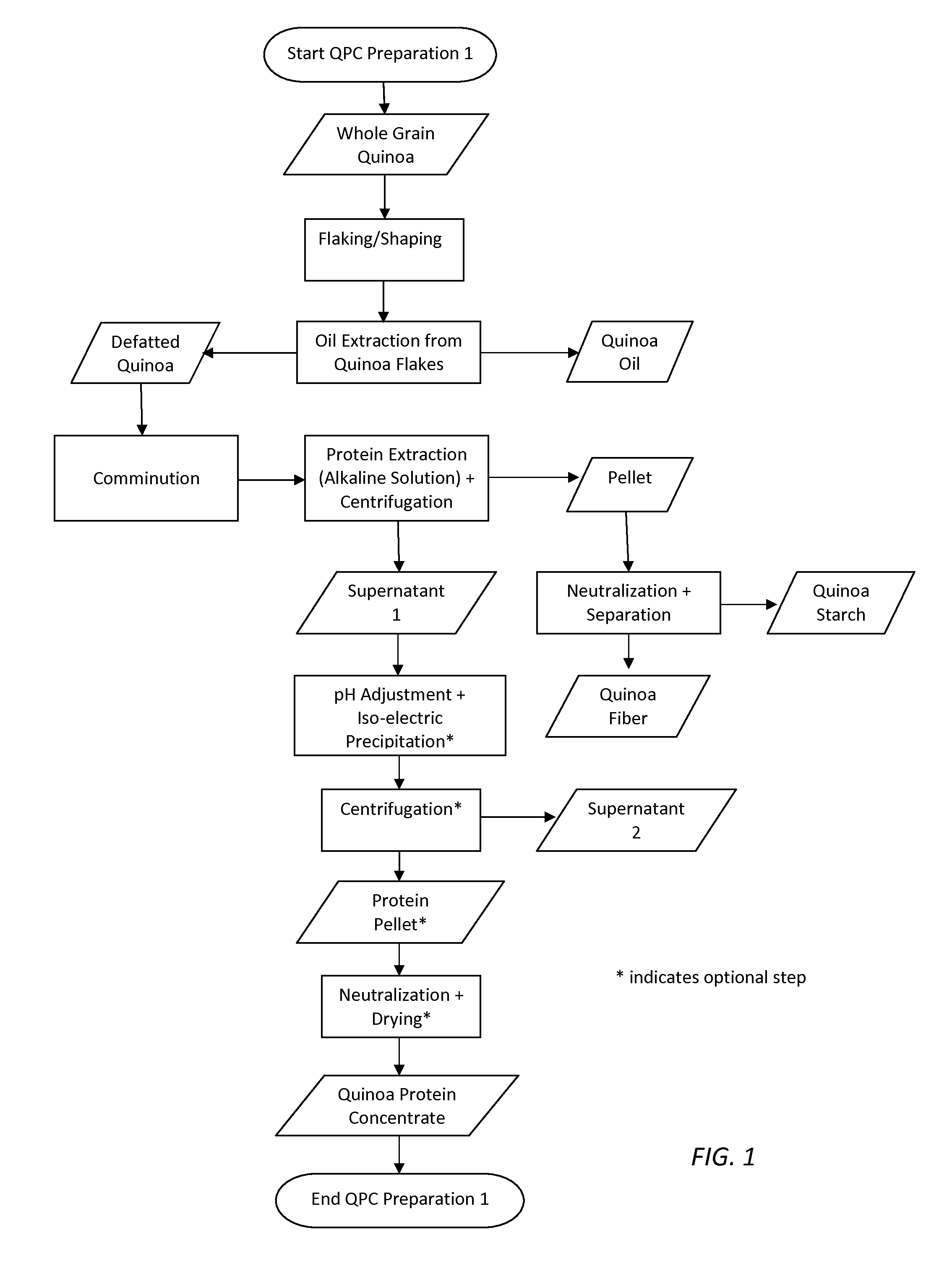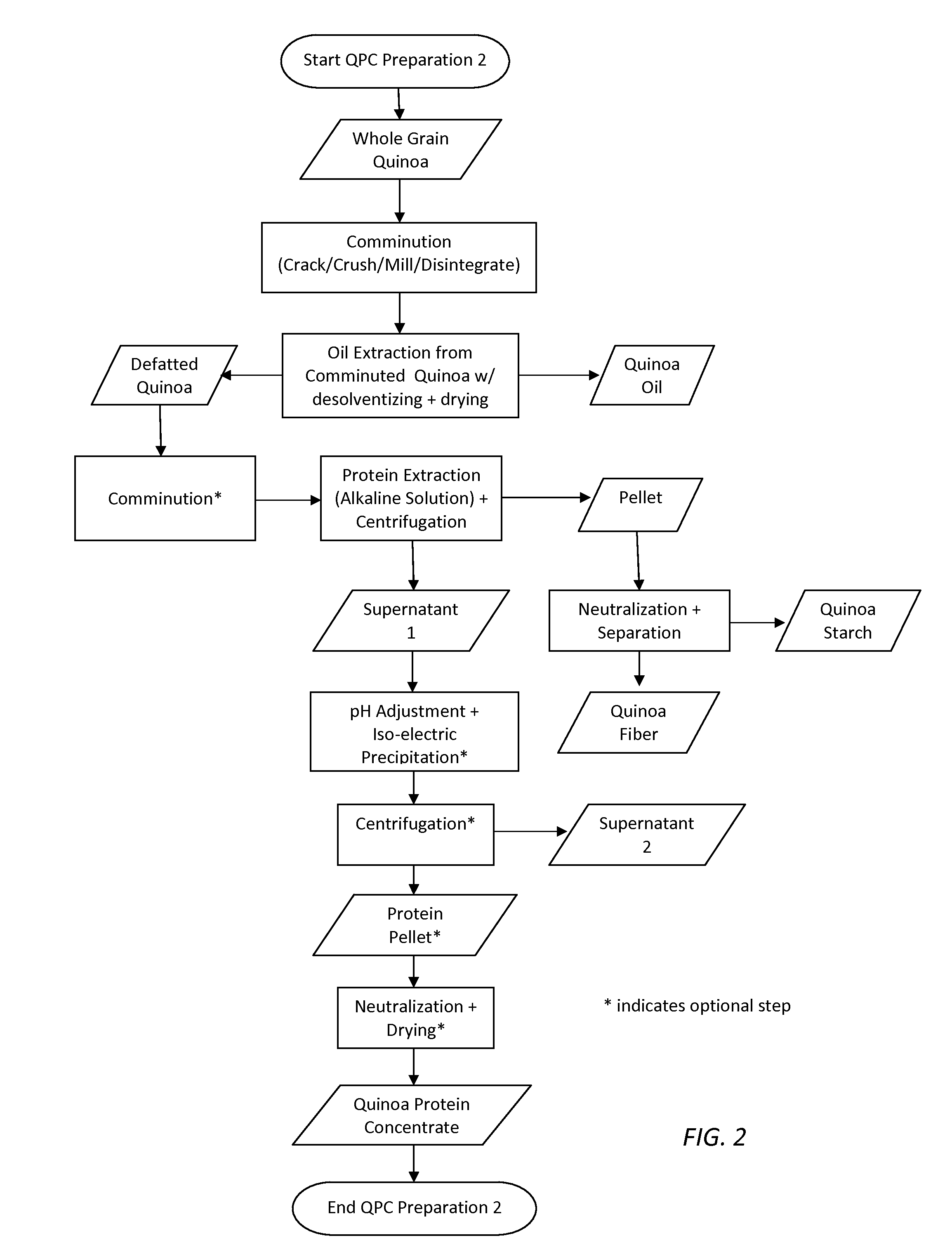Quinoa protein concentrate, production and functionality
a technology of protein concentrate and quinoa, applied in the field of quinoa protein concentrate, can solve the problems of limiting plant proteins in one or more essential amino acids, limiting product development, and limiting product developmen
- Summary
- Abstract
- Description
- Claims
- Application Information
AI Technical Summary
Benefits of technology
Problems solved by technology
Method used
Image
Examples
example 1
Quinoa Protein Concentrate (QPC)
[0052]The process provides means to isolate individual components of nutritional and commercial value from quinoa grain, all of which are food- and pharmaceutical-grade. For example, quinoa oil, which is present at about 6-9% in unprocessed quinoa seed, can be obtained at a level above 80% from the initial solvent extraction or mechanical extraction (e.g., cold pressing or expeller pressing). Likewise, the starch level obtained from the process is above 80%. Quinoa fiber isolated from the process is at a level of at least 30%, or, alternatively can be isolated at a level of at least 50%. The steps indicated with an asterisk (*) in the associated figures are optional in isolating quinoa protein concentrate. In other words, one can obtain quinoa protein concentrate in the range of at least about 50% on a dry weight basis without carrying out the steps indicated as optional. Accordingly, the present invention provides a quinoa protein concentrate having ...
example 2
Isolation of the Perisperm Fraction from Quinoa Grain and Methods for Manufacturing Edible Quinoa Flour
[0079]In a second aspect the present invention provides methods of isolation of the perisperm fraction of the quinoa grain from the fraction containing the germ and further provides methods for manufacturing a edible quinoa flour having improved flavor, shelf-life, rheological, cooking and baking characteristics. Also provided are numerous uses for the edible quinoa flour produced according to the methods taught herein. Additional aspects derived from the method of manufacturing the edible quinoa flour, are the novel quinoa flour obtained by practicing the methods of the invention. As indicated above, this quinoa flour is distinctive in its improved flavor, shelf-life, rheological, cooking and baking characteristics.
[0080]A novel quinoa flour is prepared from quinoa (Chenopodium quinoa) grain using methods described herein. Methods of making quinoa flour have been described in Inte...
example 3
Methods for Manufacturing Edible Quinoa Germ
[0097]In a third aspect the present invention provides methods of isolation of the germ fraction of the quinoa grain from the fraction containing the perisperm. Also provided are the quinoa germ produced according to the novel method, as well as numerous uses of the quinoa germ according to this method.
[0098]A novel germ-, bran-, or embryo-rich fraction of quinoa grain (“quinoa germ”) is prepared from quinoa (Chenopodium quinoa) grain using methods disclosed herein. Methods of processing quinoa grain are described in International Publication No. W02005 / 058249 and US Patent Application 20070092629 titled “Quinoa protein concentrate, production, and functionality”, the contents of which are incorporated by reference. The quinoa germ of the invention has a concentrated nutrient profile in comparison to quinoa grain, and acceptable flavor, cooking and baking characteristics. The quinoa germ of the invention also has a novel flattened or flake...
PUM
| Property | Measurement | Unit |
|---|---|---|
| size | aaaaa | aaaaa |
| pH | aaaaa | aaaaa |
| temperature | aaaaa | aaaaa |
Abstract
Description
Claims
Application Information
 Login to View More
Login to View More - R&D
- Intellectual Property
- Life Sciences
- Materials
- Tech Scout
- Unparalleled Data Quality
- Higher Quality Content
- 60% Fewer Hallucinations
Browse by: Latest US Patents, China's latest patents, Technical Efficacy Thesaurus, Application Domain, Technology Topic, Popular Technical Reports.
© 2025 PatSnap. All rights reserved.Legal|Privacy policy|Modern Slavery Act Transparency Statement|Sitemap|About US| Contact US: help@patsnap.com



